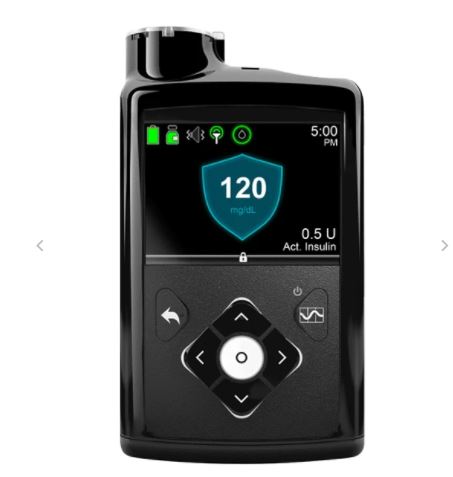What's Inside
Maintaining your blood glucose levels is very important for people living with diabetes. It will help to prevent major diabetes-induced complications in the long-run including blindness, kidney failure, and heart disease.
For those that need to take multiple insulin injections daily, switching to an insulin pump will help them better manage their insulin requirements at a steady and calculated rate throughout the day automatically.
Here we have picked a couple of the best insulin pumps available in the market and we have made a basic intro-guide on how to use them.
What are Insulin Pumps? And how do they work?
Insulin pumps are small digital devices that deliver fast-acting insulin into the user’s bloodstream continuously (Basal rate) or in variable amounts (Bolus rate) when a meal is eaten to effectively control blood sugar levels in the body the same way that the normal pancreas would do.
Most insulin pumps come with built-in bolus calculators that sense your blood glucose levels and accurately calculate the amount of insulin you need to administer.
These devices are very useful in administering the right doses of insulin and they can be a good substitute for frequent insulin injections.
These devices are usually worn outside of your body and they deliver insulin through a tube (catheter) which is connected to a thin cannula that is placed into the layer of fat under your skin.
They are usually fixed around the stomach area. They can be worn around your waist in a pump case or attached to your belt or bra, inside of a pocket, or a fanny pack.
These devices come with multiple pre-programmed modes for providing a variety of insulin delivery options that can be set by yourself or by your physician.
Best Insulin pumps currently in the market
1. MiniMed 530G
Developed by Medtronic USA, the new MiniMed 530G system is an FDA approved device that comes with an Enlite sensor, which is the most accurate and comfortable continuous glucose sensor developed by them.
It comes in a metallic purple design and an in-built LCD screen that displays all of its information and functions.
Its Enlite sensor delivers better comfort and reliable CGM accuracy that is critical for its performance, and it altogether boasts a 31% improvement in overall accuracy and can detect up to 93% of hypoglycemia episodes when its predictive and threshold alerts are set on.

Benefits of the MiniMed 530G
👍 Automatically stops insulin delivery when sensor glucose values reach a preset low level.
👍 Provides better glucose control compared to multiple daily injections.
👍 Better detection of low and high glucose values
👍 Improved sensor accuracy
👍 More comfortable, a smaller sensor that is 38% shorter in length
👍 Longer sensor life – Enlite can now be worn for six days of use
2. MiniMed 670G
Also developed by Medtronic USA, the MiniMed 670G comes with a smarter new design and exciting new feature. It is currently the world’s first hybrid closed-loop system.
It comes with a bright colour screen for displaying all of its functions and statuses and includes a variety of customizable options and convenient features to choose from.

Best Features
👍 Contour Next link 2.4 Glucose meter: A compatible meter that wirelessly connects to your pump allowing you to send BG meter readings to your pump
👍 5 Minute surveillance: The system automatically changes the amount of background insulin you receive based on your body’s needs
👍 Waterproof pump: Protected against the effects of being underwater to a depth of up to 3.6 meters for up to 24 hours.
👍 90 days of pump history memory.
How to use your Insulin Pump?
The following instructions are only for providing a basic idea of administering insulin pumps, please refer to your user manual and your physician before use.
✅ Step 1: filling your reservoir
Take your vial of insulin, and push the reservoir on top of the vial. Flip it over and push the plunger rod to insert the needle then pull the plunger slowly to fill the reservoir with the amount of insulin you require.
Now put the reservoir into the pump and fill the tubing.
✅ Step 2: Inserting the infusion set
Take the quick-serter, remove the tape and needle guard and twist it down, then place it on your belly and hit the two white buttons to launch the needle. Now remove the needle and your infusion set is now ready in place.
✅ Step 3: Inserting the sensor
Grab your serter and place it over the sensor bag straight in and pull it out. Now around 2 inches away from your infusion set, place the serter on your belly and press the button to release it.
Wait 5 seconds and press it again and then release it up. Now pull the top needle of the sensor and you are set for the last step
✅ Final step
Take the transmitter off the charger and snap it fit onto the sensor and wait for the confirmation light to make sure it is reading and then secure with the flap.
Great! You are all set.

